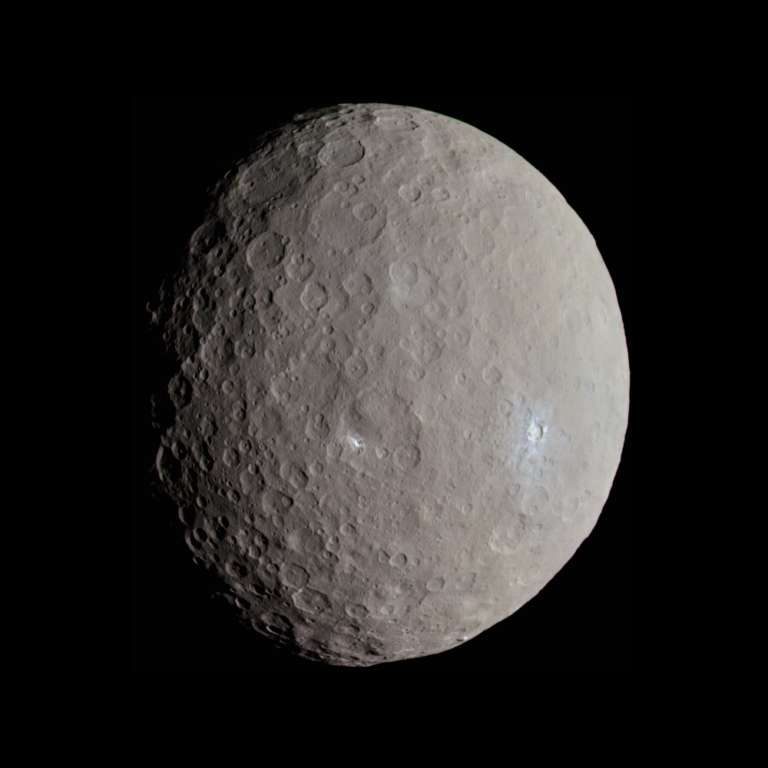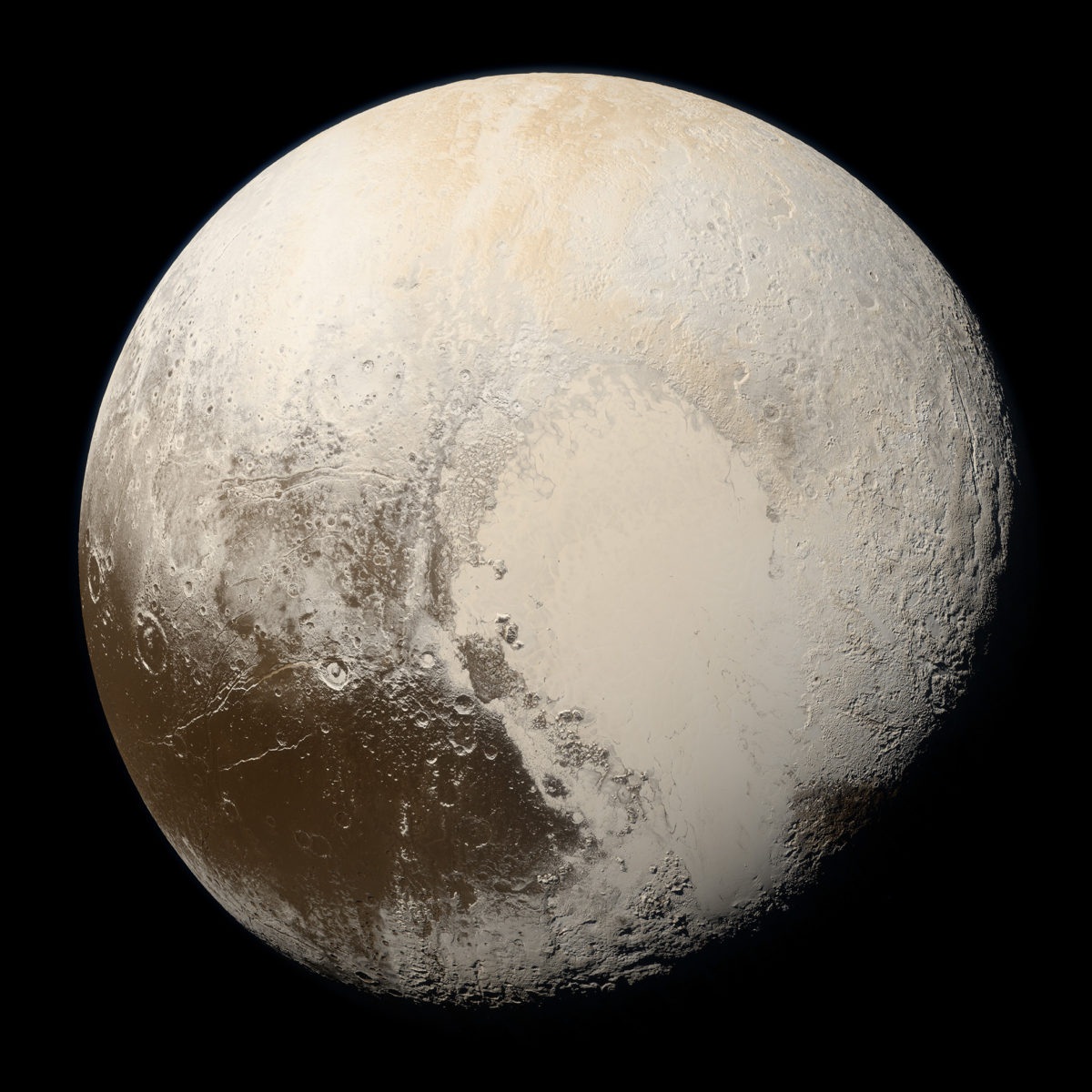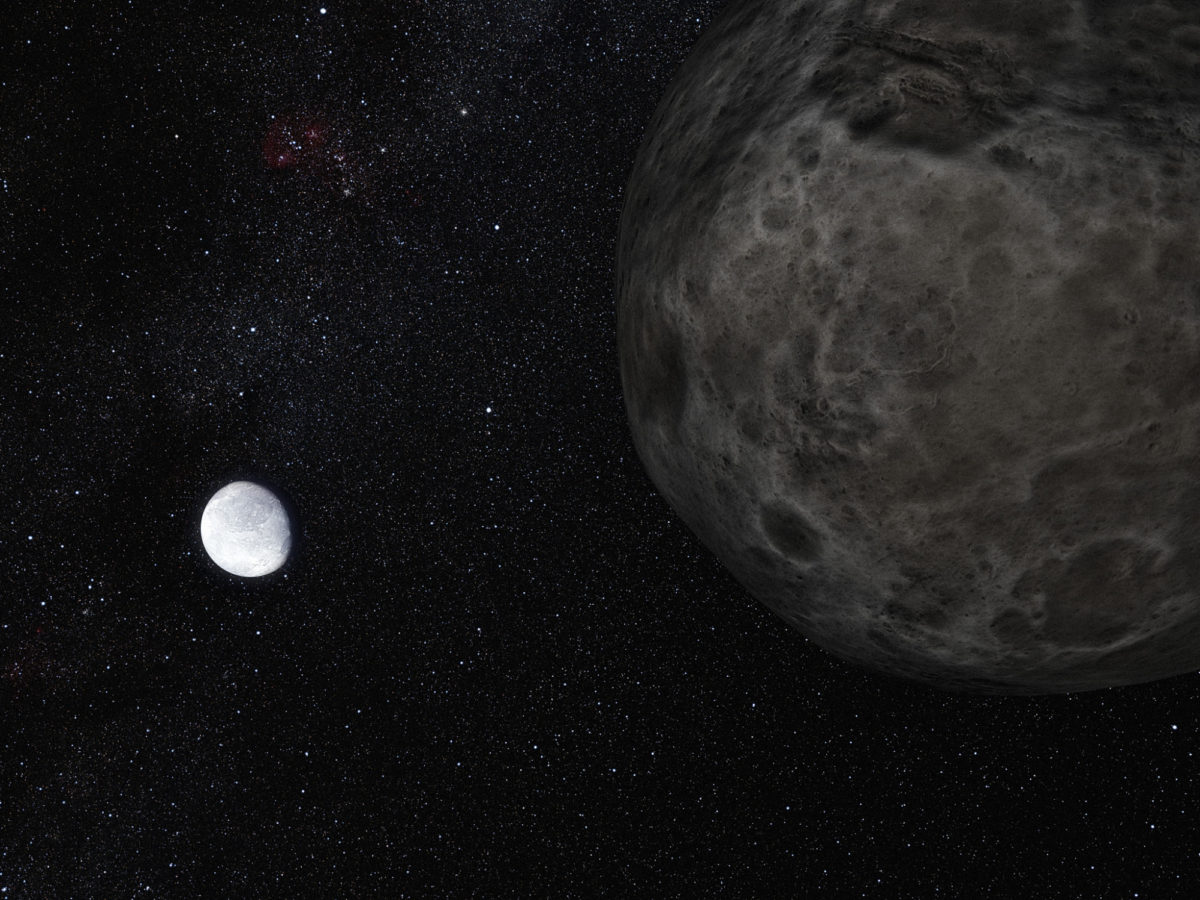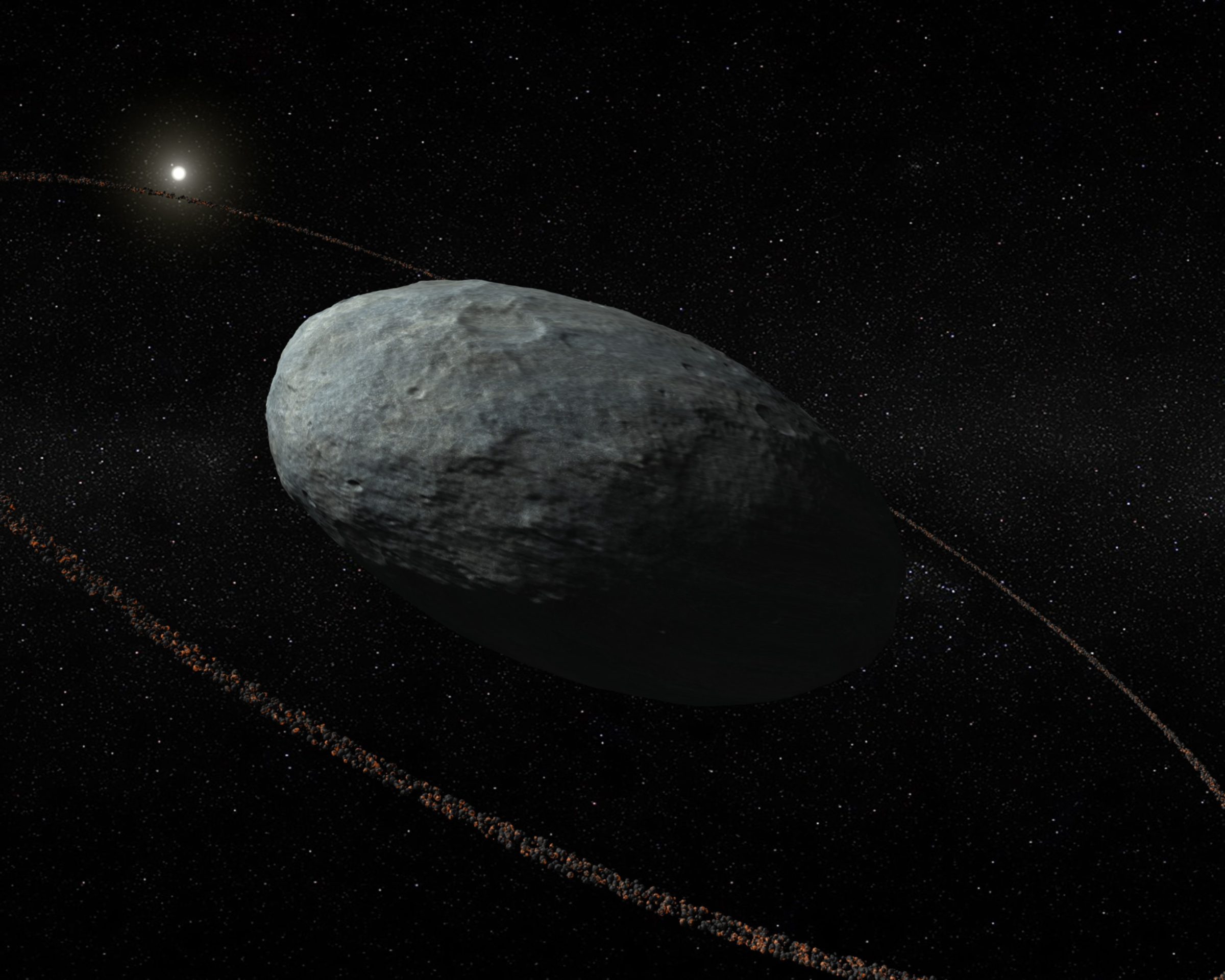Jason Davis • Apr 19, 2023
Meet the Solar System's five official dwarf planets
Our Solar System is filled with diverse and wondrous worlds. From asteroids to gas giants, we’ve sent spacecraft to objects of all shapes and sizes, yet there is still much more to explore.
Among the menagerie of worlds orbiting our Sun are dwarf planets. According to the International Astronomical Union, a dwarf planet is round and circles the Sun like a planet, but has not “cleared the neighborhood” around its orbit. In other words, planets are much more massive than anything orbiting near them, while dwarf planets are not. This definition, which famously removed planethood status from Pluto in 2006, disqualifies known objects in the main asteroid belt and the Kuiper Belt beyond Neptune from being named as planets.
The IAU currently recognizes five dwarf planets: Ceres, Pluto, Haumea, Makemake, and Eris. Ceres lies in the main asteroid belt between Mars and Jupiter, while the rest are in the Kuiper Belt.
There are almost certainly more dwarf planets. Unfortunately, most are very far away, and we can’t definitively prove that they are round. Mike Brown, the Caltech astronomer who led teams of scientists that discovered Eris and other distant worlds, maintains a list of candidate dwarf planets ranked from “near certainty” to “probably not.”
Let’s visit the Solar System’s five official dwarf planets, starting from the one closest to the Sun and journeying outward.
Ceres

Ceres is the only IAU-recognized dwarf planet that resides in the main asteroid belt. With a width of about 952 kilometers (592 miles), it is the most diminutive dwarf planet — more than 13 times smaller than Earth. Yet it is by far the largest asteroid, accounting for roughly a third of the mass in the asteroid belt.
Ceres probably has a solid core and icy mantle, on top of which lies a rocky, dusty crust. It may be made of 25 percent ice by mass, making it an attractive water source for humans in science fiction.
The dwarf planet’s surface is speckled with bright salt deposits that may be remnants of briny water leaking to the surface. The source of that water, and how it ended up on the surface, is a topic of ongoing debate. Data from NASA’s Dawn spacecraft, which explored Ceres from 2015 to 2018, suggests a complex scenario where Ceres may contain deep water reservoirs connected to shallow, melted water pockets created by asteroid impacts.
One clue to Ceres’ watery origins is that it could be a protoplanet that formed elsewhere before migrating into the asteroid belt, where Jupiter’s gravity kept any large worlds from forming.
Ceres gets its name from the Roman goddess of agriculture. According to NASA, the word cereal has the same origin.
Pluto

Pluto was our ninth planet until 2006. It is virtually tied with Eris for the largest-sized dwarf planet, with a diameter of about 2,380 kilometers (1,400 miles) — roughly two-thirds the size of Earth’s Moon.
Discovered in 1930, Pluto went unexplored until NASA’s New Horizons spacecraft flew past the icy world in 2015, revealing surprisingly youthful mountains, a pale “heart” of frozen nitrogen, and red patches of complex molecules called tholins.
Pluto may have once had a subsurface ocean. Whether or not it still holds water beneath its surface is less clear, but there’s a chance such an ocean could be habitable, challenging our expectations on where to find life in our Solar System.
After New Horizons completed its Pluto flyby and crossed into the dwarf planet’s shadow, it captured a magnificent halo of blue haze. The haze may be created by atmospheric processes similar to those above Titan.
Pluto is named after the Roman god of the underworld. Its five moons Charon, Styx, Nix, Kerberos, and Hydra have underworld-themed names and circle the dwarf planet in neatly nested orbits. They were likely formed long ago when another object smashed into Pluto, creating debris that coalesced into moons.
Haumea
Haumea may be a dwarf planet, but it boasts rings and moons just like its beefier planetary counterparts. The rings were discovered in 2017 when astronomers watched Haumea pass in front of a star, revealing dips in starlight that could only be explained by the presence of a ring system. Among the telescopes watching were two funded by The Planetary Society’s Shoemaker NEO Grant program.
Haumea makes a full rotation in just four hours. Its high-speed spin distorts the dwarf planet’s shape, giving it an egg-like appearance. It measures roughly 2,322 kilometers (1,442 miles) across its longest axis. Another object may have slammed into Haumea in the past, giving it its fast rotation rate.
Haumea is named after the Hawaiian goddess of fertility. Its two moons, Namaka and Hi'iaka, are named after Haumea’s mythological daughters.
Makemake

Distant Makemake has a day length similar to that of Earth: twenty-two-and-half hours. It has a bright, reddish-brown surface like Pluto, possibly littered with pellets of frozen methane.
Makemake has a moon nicknamed MK2 that was discovered by the Hubble Space Telescope. Unlike Makemake, MK2 may be very dark. The moon’s low gravity may keep it from holding on to ice that sublimates into space, leaving behind a darker surface.
Makemake is named after the Rapa Nui god of fertility. The Rapa Nui are the native people of Easter Island in the Pacific Ocean. Makemake fits into the midsize category of official dwarf planets. Its diameter is roughly 1,426 kilometers (886 miles), which is larger than Ceres but smaller than Pluto.
Eris

Dwarf planet Eris orbits an average of 68 times farther away from the Sun than Earth. At the farthest point in its orbit, its tenuous atmosphere may freeze and collapse onto the surface. When Eris reaches the closest point in its orbit to the Sun, the warmed frozen atmosphere may sublimate off the surface, turning from a solid directly into a gas.
With a diameter of roughly 2,330 kilometers (1,448 miles), Eris is nearly the same size as Pluto. It was initially thought to be bigger than Pluto, which helped set off the 2006 IAU planethood debate that ended with Pluto being reclassified as a dwarf planet. It is fitting, perhaps, that Eris was named after the Greek goddess of discord and strife.
Eris’ single known moon Dysnomia is named after Eris’ mythological daughter. Dysnomia has a 16-day circular orbit.
Support our core enterprises
Your support powers our mission to explore worlds, find life, and defend Earth. You make all the difference when you make a gift. Give today!
Donate

 Explore Worlds
Explore Worlds Find Life
Find Life Defend Earth
Defend Earth


